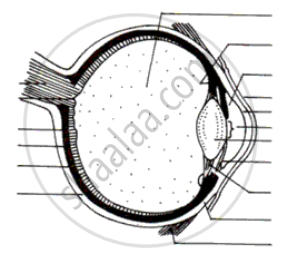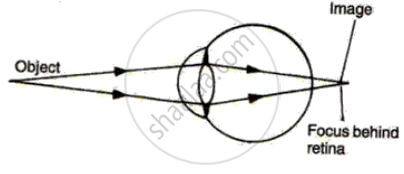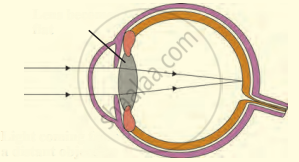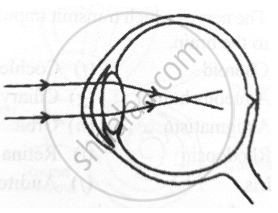Advertisements
Advertisements
प्रश्न
With reference to the functioning of the eye, answer the question that follow:
What is the shape of the lens during distant vision?
उत्तर
During distant vision, the lens is flatter and less curved.
संबंधित प्रश्न
Name the part of the retina which is insensitive to light.
Give the scientific names of the following parts of the eye:
a clear window at the front of the eye.
Why does it take some time to see objects in a dim room when you enter the room from bright sunshine outside?
Explain why, when it is getting dark at night, it is impossible to make out the colour of cars on the road.
A man driving a car can read a distant road sign clearly but finds difficulty in reading the odometer on the dashboard of the car. Which of the following statement is correct about this man?
(a) The near point of his eyes has receded away.
(b) The near point of his eyes has come closer to him.
(c) The far point of his eyes has receded away.
(d) The far point of his eyes has come closer to him.
With both eyes open, a person's field of view is about:
(a) 90°
(b) 150°
(c) 180°
(d) 360°
Mention if the following statement is true (T) or false (F) Give reason.
yellow spot of the retina is the region of colour vision
In what two ways is the yellow spot different from the blind spot?
Label the following diagram :

Name the following:
The opening through which light enters the eyes.
The diagram alongside represents a certain defect of vision of the human eye.
(i) Name the defect.
(ii) Describe briefly the condition in the eye responsible for the defect.
(iii) Redraw the figure by adding a suitable lens correcting the defect. Label the parts through which light-rays pass.
(iv) What special advantage do human beings derive in having both eyes facing forward?

What is a Lachrymal gland?
Name the following:
The most sensitive region of the retina.
For a normal human eye the near point is at _______.
The following figure show the change in the shape of the lens while seeing distant and nearby objects. Complete the figures by correctly labelling the diagram.

When light rays enter the eye, most of the refraction occurs at the ____________.
Given below is a diagram depicting a defect of the human eye. Answer the questions that follow:

- Give the scientific term for the defect.
- Mention one possible reason for the defect.
- What type of lens can be used to correct the defect?
Match the following:
| Column - I | Column - II |
| 1. Retina | a. Path way of light |
| 2. Pupil | b. Far point comes closer |
| 3. Ciliary muscles | c. near point moves away |
| 4. Myopia | d. Screen of the eye |
| 5. Hypermetropia | e. Power of accommodation |
Name the following:
Kind of retinal cells sensitive to dim light.
Match the terms in column I with those in column II and write down the matching pairs.
| Column I | Column II | ||
| (i) | Conjunctiva | (a) | Viral infection |
| (ii) | Cornea | (b) | Ciliary body |
| (iii) | Choroid | (c) | Spiral-shaped |
| (iv) | Cochlea | (d) | Transparent epithelium |
| (v) | Conjunctivitis | (e) | Suspensory ligament |
| (f) | Contains melanin | ||
| (g) | Transparent but appears black |
